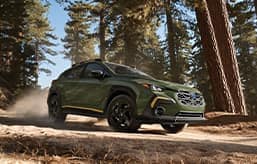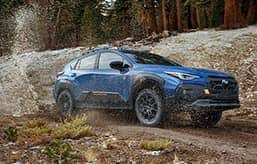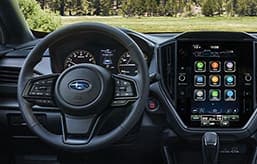- Ford's three-row EV will become a hybrid.
- Ford has also walked back its midsize electric truck.
- The automaker will decrease its yearly spending on EVs from 40% to 30%.
Ford Ditches Planned Three-Row EV, Will Focus on Hybrids
Ford scales back its approach on EVs yet again
Ford's EV future is a little more uncertain now, as the Blue Oval is putting its plans for a fully electric three-row SUV on hold. The automaker initially announced the EV SUV — which would have slotted above the Mustang Mach-E in terms of price and size — just over a year ago, but buyers have been reluctant to take the plunge on EVs. Instead, Ford says it wants to focus on hybrids. The logic is simple: A more cost-effective hybrid will offer a better value for its buyers.
Ford says this is all part of a new strategy that will hopefully make sourcing battery materials more efficient (which will in turn make the process more cost-effective). The expense associated with sourcing materials was cited among the reasons Ford gave for axing the SUV. As CEO Jim Farley put it, "If you are not competitive on battery cost, you are not competitive." SUV buyers shouldn’t bemoan the death of the the big EV Ford originally billed as a "personal bullet train" since Ford will shift to a hybrid three-row instead.
Not only will that be cheaper, but it also will benefit from hybrid demand that has soared in recent months. Ford has plenty of experience in this area — its F-150 hybrid has been one of our favorite trucks for years, and the competition hasn't caught up yet with their own pickups. The Expedition, the brand's biggest SUV, is based on the very same platform that makes up the bones of the F-150. And while a three-row hybrid isn't as simple as grafting an SUV body onto the F-150 hybrid bones, it will no doubt be significantly more cost-effective than starting from scratch and sourcing, developing, retooling for, and building a brand-new three-row EV SUV.
Ford has no large-scale EV architecture that would currently support a three-row EV right now, as it hadn't invested in the modular architectures that make up so many of the Hyundai Group's EVs. Remember, the Kia EV9, Kia EV6, Hyundai Ioniq 5, Hyundai Ioniq 6, the upcoming Hyundai Ioniq 9, and the Genesis GV60 all share the same platform. That means the Hyundai Group makes money from selling six different models that use one base structure.
The Mach-E's bones are currently exclusive to that car and would require serious investment in order to be made larger because it is a heavily adapted compact SUV structure. The Lightning's platform is essentially a truck frame with batteries loaded into the frame and would need an equally tremendous rework to fit a brand-new SUV body. The now dead Ford three-row would have likely used the architecture from this patent filing (an architecture that, from the images, does look scalable), but now that it's gone we can't be sure if or when Ford will continue developing that patented platform. So Ford taking the road it's already traveled for well over half a decade with the F-150 hybrid makes significantly more sense both for it and for its buyers in both the short and medium term.
As a whole, Ford will decrease its yearly spending on EVs from 40% to 30% and has again pushed back plans for its next-gen midsize electric truck. It was originally supposed to start production just next year, though it is now scheduled for 2027, barring further delays.
Edmunds says
Ford is walking back its stance on EVs in the face of the many problems the U.S. faces with the adoption of EVs, including poor charging infrastructure, high vehicle costs and more.






 by
by  edited by
edited by